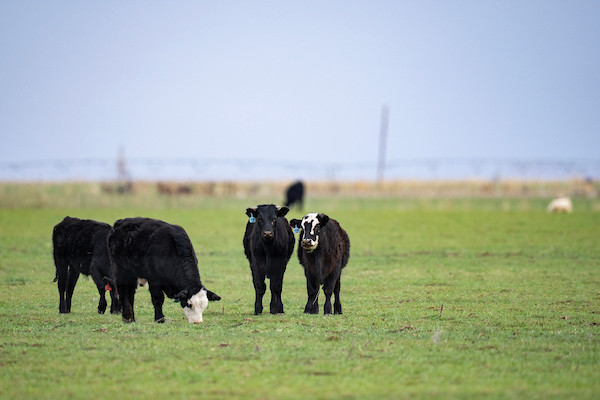Vegetation Zones in the Alps and Climate Impact
The Alps exhibit several distinct vegetation zones that correspond to variations in elevation and climate. These zones have largely remained intact; however, global warming has induced an upward migration of plant species since the early 1900s. Austrian researchers estimate that the upper limits of Alpine plant species have risen approximately three feet per decade throughout the 20th century. This phenomenon highlights the urgent need to address climate change, aligning with Sustainable Development Goal (SDG) 13: Climate Action.
Forest Composition by Elevation
The valley floors and lower slopes of the Alps support a variety of deciduous tree species, including:
- Linden
- Oak
- Beech
- Poplar
- Elm
- Chestnut
- Mountain ash
- Birch
- Norway maple
At higher elevations, coniferous forests dominate, primarily consisting of spruce, larch, and various pine species. Spruce trees generally reach their upper limit at approximately 7,200 feet in the Western Alps. Larch trees, which are more resistant to cold, moisture scarcity, and high winds, can grow up to 8,200 feet and are interspersed with spruce at lower elevations.
Upper Forest Limits and Alpine Meadows
At the upper forest boundaries, hardy species such as the Arolla pine thrive, typically growing above 5,000 feet. This slow-growing tree can live between 350 and 400 years, with some specimens reaching up to 800 years. The resin-impregnated wood decays very slowly and was traditionally valued for constructing chalets. Due to significant reduction in Arolla pine populations, strict controls on tree cutting are enforced.
Above the tree line and below the permanent snow line—spanning approximately 3,000 feet—glaciation has eroded the landscape, creating areas covered by lush Alpine meadows. These meadows support summer grazing of sheep and cows, which has contributed to lowering the natural forest’s upper limits. These mountain pastures, known as alpages, are found above main and lateral valleys. However, their carrying capacity is threatened by:
- Spread of invasive weeds
- Pollution from animal waste
- Erosion linked to ski-related development
In the southern Maritime Alps and southern Italian Alps, Mediterranean vegetation dominates, featuring maritime pine, palm, sparse woodland, agave, and prickly pear. These ecological dynamics emphasize the importance of sustainable land management practices, supporting SDG 15: Life on Land.
Alpine Fauna and Conservation Efforts
The Alpine region hosts various animal species well-adapted to its rugged environment. Notable species include:
- Ibex: A wild goat with exceptional agility suited to rocky terrain
- Chamois: Goatlike animals adapted to steep landscapes
- Marmots: Hibernate in underground galleries during winter
- Mountain hare and ptarmigan: Both species develop white coats in winter for camouflage
Several national parks within the Alps protect native fauna. Despite increasing population pressures causing the disappearance of some species, successful reintroduction programs have restored populations of prized animals such as the lynx, brown bear, and bearded vulture (lammergeier). These conservation initiatives contribute directly to SDG 15: Life on Land and SDG 11: Sustainable Cities and Communities by preserving biodiversity and promoting ecological balance.
Conclusion
The Alpine ecosystem, characterized by its diverse vegetation zones and specialized fauna, faces significant challenges from climate change, human activity, and environmental degradation. Addressing these issues through sustainable practices and conservation aligns with multiple Sustainable Development Goals, including:
- SDG 13: Climate Action – Mitigating climate change impacts on alpine vegetation and wildlife
- SDG 15: Life on Land – Protecting terrestrial ecosystems and biodiversity
- SDG 11: Sustainable Cities and Communities – Managing human activities to reduce environmental pressures
Continued research, policy implementation, and community engagement are essential to safeguard the Alps for future generations.
Report compiled by Thomas M. Poulsen
1. Sustainable Development Goals (SDGs) Addressed or Connected to the Issues Highlighted in the Article
- SDG 13: Climate Action – The article discusses the impact of global warming on the upward migration of Alpine plant species, indicating climate change effects.
- SDG 15: Life on Land – The article focuses extensively on vegetation zones, forest species, animal species, biodiversity, and conservation efforts in the Alps.
- SDG 12: Responsible Consumption and Production – The article mentions controlled cutting of Arolla pine trees and the impact of grazing and ski-related development on alpine meadows, which relates to sustainable management of natural resources.
- SDG 11: Sustainable Cities and Communities – The article touches on human activities such as grazing and ski development affecting natural habitats, implicating sustainable land use and community impact.
2. Specific Targets Under Those SDGs Identified Based on the Article’s Content
- SDG 13: Climate Action
- Target 13.1: Strengthen resilience and adaptive capacity to climate-related hazards and natural disasters.
- Target 13.3: Improve education, awareness-raising and human and institutional capacity on climate change mitigation, adaptation, impact reduction, and early warning.
- SDG 15: Life on Land
- Target 15.1: Ensure the conservation, restoration and sustainable use of terrestrial and inland freshwater ecosystems and their services.
- Target 15.4: Ensure the conservation of mountain ecosystems, including their biodiversity, to enhance their capacity to provide benefits essential for sustainable development.
- Target 15.5: Take urgent and significant action to reduce the degradation of natural habitats, halt the loss of biodiversity, and protect threatened species.
- SDG 12: Responsible Consumption and Production
- Target 12.2: Achieve the sustainable management and efficient use of natural resources.
- Target 12.4: Achieve environmentally sound management of chemicals and all wastes throughout their life cycle.
- SDG 11: Sustainable Cities and Communities
- Target 11.3: Enhance inclusive and sustainable urbanization and capacity for participatory, integrated and sustainable human settlement planning and management.
3. Indicators Mentioned or Implied in the Article to Measure Progress Towards the Identified Targets
- Indicator for SDG 13 (Climate Action)
- Rate of upward migration of plant species in the Alps (measured as meters or feet per decade).
- Changes in elevation limits of tree species such as spruce, larch, and Arolla pine.
- Indicators for SDG 15 (Life on Land)
- Extent and health of forested areas at different elevations.
- Population status and reintroduction success of native animal species (e.g., lynx, brown bear, bearded vulture).
- Area of alpine meadows and their carrying capacity affected by grazing and invasive species.
- Rate of habitat degradation due to human activities such as ski-related development and pollution from animal wastes.
- Indicators for SDG 12 (Responsible Consumption and Production)
- Regulation and control measures on cutting of Arolla pine trees.
- Levels of pollution from animal wastes in alpine pastures.
- Indicators for SDG 11 (Sustainable Cities and Communities)
- Impact assessment of ski-related development on natural habitats and erosion rates.
4. Table of SDGs, Targets, and Indicators
| SDGs | Targets | Indicators |
|---|---|---|
| SDG 13: Climate Action |
|
|
| SDG 15: Life on Land |
|
|
| SDG 12: Responsible Consumption and Production |
|
|
| SDG 11: Sustainable Cities and Communities |
|
|
Source: britannica.com







